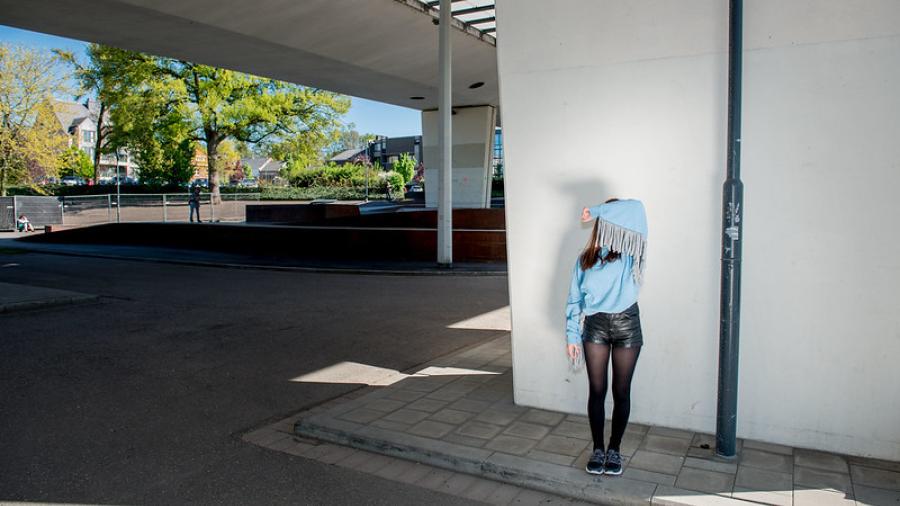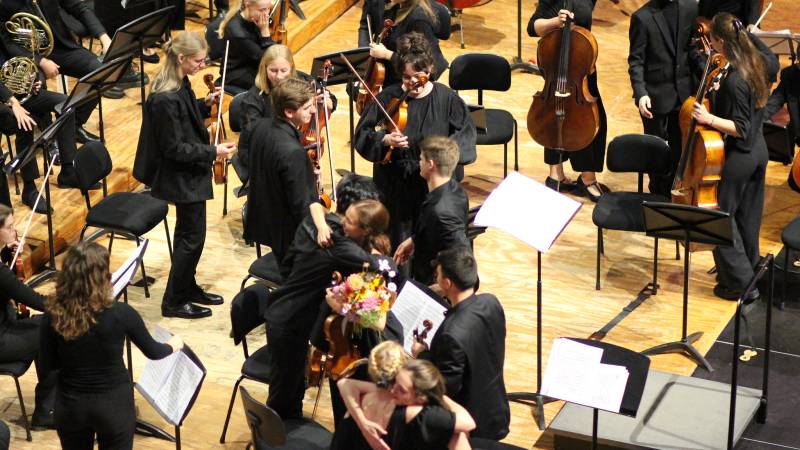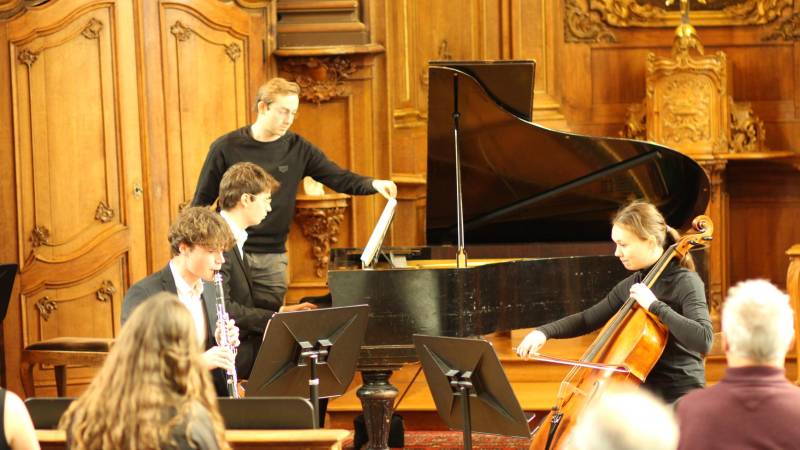
LUCA School of Arts - campus Lemmens
Lemmensberg 3
3000 Leuven
Chamber Music hall
Clarinet Choir and Cello Ensemble
LUCA Cello
Geert De Bièvre, Amy Norrington en Martijn Vink, ensemble leaders
LUCA Clarinet
Roeland Hendrikx, conductor

LUCA Cello
Programme:
- Franz Schubert: Schwanengesang
- Richard Wagner: Tristan und Isolde
- Johann Sebastian Bach: Brandenburgs Concerto nr. 6
- Marnix Peeters: Adagio (Samuel Barber - arr.)
'Liebesbotschaft', 'Ständchen' and 'Aufenthalt' are three songs from Franz Schubert's song cycle Schwanengesang (1828), written to lyrics by poet Ludwig Rellstab. In 'Liebesbotschaft' (the lover's message), a small, babbling brook is asked to tenderly convey a feeling of love; 'Ständchen' (Serenade) is a declaration of love in the evening light, 'Aufenthalt' (abode) describes an indefinite longing and unrequited feelings. Richard Birchall made an arrangement of these songs for cello octet.
That the opera Tristan und Isolde (1859) by Richard Wagner (1813-1883) has inspired many a composer need not be said. With its progressive tonality and harmonies unusual for its time, Wagner managed to secure a place in the canon of the operatic repertoire with this opera. The theme is of all times: love, deception, intrigue, seduction and adultery. Richard Birchall adapted the prelude to this opera for performance by cello octet.
The Brandenburg Concertos (1721) is the collective name given to a number of concertos with varying instrumentations by Johann Sebastian Bach (1685-1750). Bach did not commission the concertos, but dedicated them to Christian Ludwig, Margrave of Brandenburg, under the name Six Concerts avec plusieurs instruments. The sixth and final Brandenburg Concerto was written by Bach for two violas, two violas, cello, double bass and harpsichord. What was unusual was that the violin, for whom the main role was normally reserved, was completely absent, making it ideal for Valter Despalj to make use of the lower regions and create an arrangement of this concerto for cellos only.
The arrangement of Barber's Adagio came about after LUCA commissioned one of its young, recently graduated composers, Marnix Peeters, to compose a work for a very unusual instrumentation: a creation for cello and clarinet ensemble. American composer Samuel Barber (1910-1981) wrote the Adagio for string ensemble in 1936, as an adaptation of the second movement of his own first String Quartet. The work is haunting, haunting and despair speaks from almost every note. As simple as the composition may seem because of the sheer succession of slow notes, its atmosphere, harmonies and the constructive musical line that is gripping to the throat make it undeniably a masterpiece.
LUCA Clarinet
Programme:
- W.A. Mozart: Ouverture Le Nozze di Figaro
- Carl Maria von Weber: Grand duo concertant
- Ludwig von Beethoven: Symfonie nr. 5
Mozart (1756-1791) wrote his tragicomic opera Le Nozze di Figaro (The Wedding of Figaro) (1786) on a libretto by Da Ponte and conducted the first performance himself. The story is set in Seville, where Figaro, servant at Count Almaviva's palace, is preparing his marriage to Susanna. The count, however, tries to seduce Susanna, giving rise to a plot full of intrigue, misunderstandings and attempts at revenge. The overture to the opera is often performed separately from the opera, and its Mozartian stateliness on the one hand and playful simplicity on the other inspired many a composer to write adaptations.
The Grand duo concertant (1815-1816) by Carl Maria von Weber (1786-1826) could almost be called a bravura piece. The work, originally written by the composer for piano and clarinet, unpacks with virtuoso delights for both piano and clarinet. British critic John Warrack once described the work as "a double concerto without orchestra". Even the arrangement of the rondo for clarinet ensemble leaves nothing to the imagination in that respect.
Needless to say, Symphony No 5 by Ludwig von Beethoven (1770-1827) is one of the best-known and most frequently performed symphonies of past centuries. The first movement in particular earned the symphony its nickname of "symphony of fate". However, the second movement, the andante con moto, need not be inferior to the Allegro con brio.
Buy your tickets below.
Free for staff and students of LUCA/KSO










